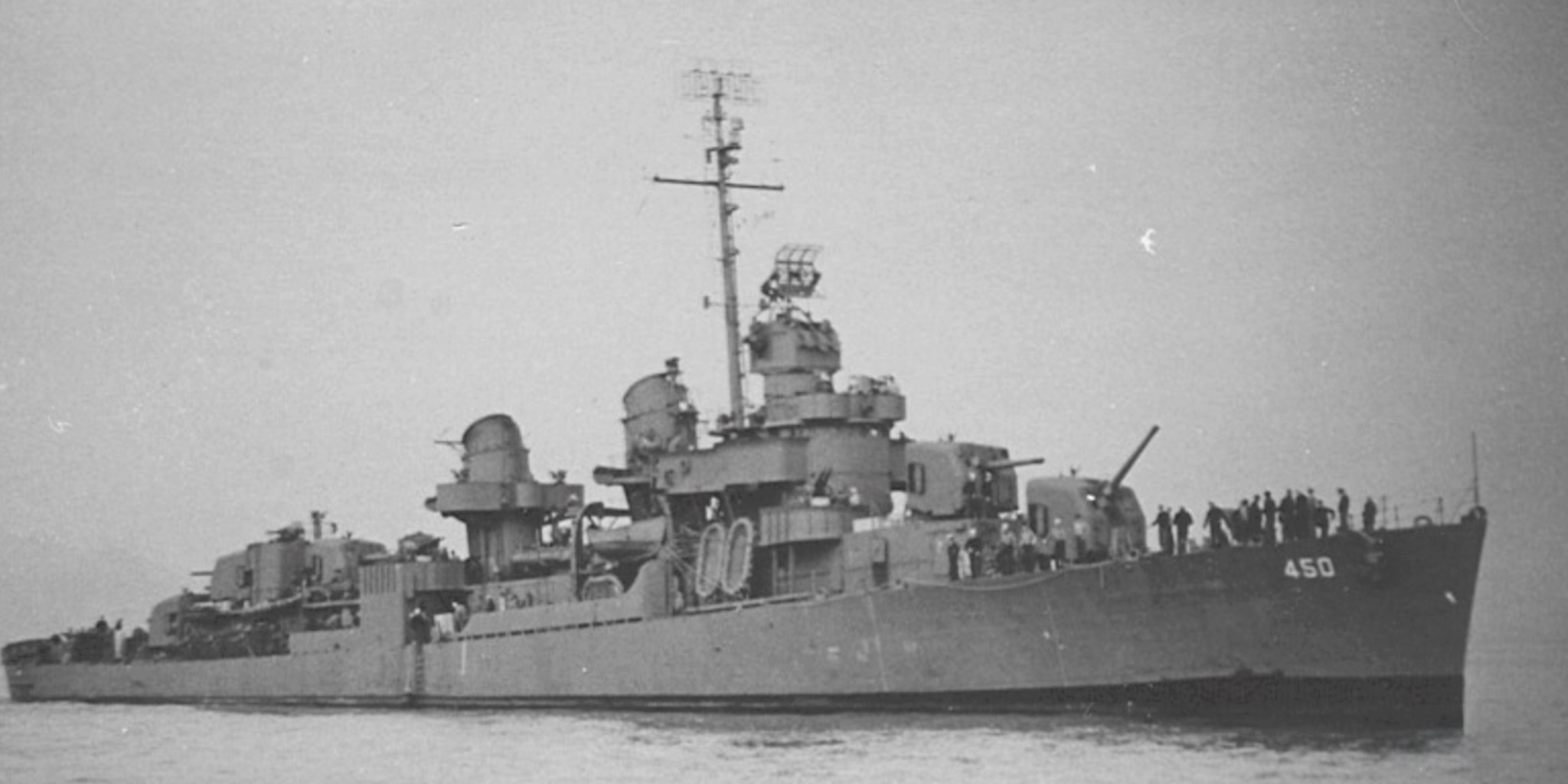


The Fletcher-class destroyer USS O’Bannon, affectionately known as the “Lucky O,” distinguished itself during World War II with an impressive record, securing 17 battle stars and a Presidential Unit Citation. The records signify Lucky-O’s contributions to the fierce naval engagements along the Solomon Islands’ strategic sea route, famously referred to as “The Slot.”
Under the leadership of Lt. Cmdr. Donald J. MacDonald, the destroyer achieved a remarkable blend of honor and legend. The tale of how it allegedly sank a Japanese submarine using nothing but potatoes has transformed into a legendary account from wartime history.
On the evening of April 5, 1943, the radar aboard the O’Bannon detected the Japanese submarine RO-34, which was positioned on the surface approximately 7,000 yards away. With stealthy precision, the destroyer approached, coming so close that sailors would later remember glimpsing Japanese crew members dozing on the deck.
In a tale steeped in legend, the O’Bannon found itself perilously near the flames, unable to unleash its artillery. In a moment of desperation, the crew members resorted to an unconventional tactic, seizing potatoes from the spud locker and launching them at the submarine.
Surprisingly, the Japanese sailors mistook flying potatoes for hand grenades, leading to a bewildering situation. In a frantic effort, they scrambled to toss these unexpected projectiles overboard, creating just enough distraction for the O’Bannon to reposition and launch its attack. “This kept them occupied as they attempted to dispose of them by tossing them back at the O’Bannon or over the edge of the submarine,” sailor Ernest A. Herr later recalled.
However, the reality was far more ordinary. In his book Tin Can Titans, military historian John Wukovits demonstrates that MacDonald indeed employed depth charges and fired 40 mm and 20 mm guns, which compelled the RO-34 to submerge and create a large oil slick that U.S. aviators observed the next day.
Nevertheless, the story of the potato endured. A comment from the ship’s cook—expressing that they had been so near he “thought he could have thrown potatoes at the boat”—caught the attention of the media, was recounted by Maine potato farmers, and was commemorated in plaques. "I've been trying to drive a stake through this story for years," MacDonald expressed his frustration.
O’Bannon’s wartime service stands out as a remarkable chapter in history, one that transcends the boundaries of myth. Adm. William "Bull" Halsey asserted that omitting the story of the U.S.S. O'Bannon would leave the narrative of the Pacific war incomplete. The destroyer's distinguished record secured its esteemed position as Halsey's selected escort for the battleship Missouri as it entered Tokyo Bay, marking Japan's surrender on September 2, 1945.
The “Lucky O” made history as the first U.S. warship to journey from Tokyo to San Francisco’s Golden Gate Bridge following the war, securing its legacy in naval lore—potatoes included.
















From breaking news to thought-provoking opinion pieces, our newsletter keeps you informed and engaged with what matters most. Subscribe today and join our community of readers staying ahead of the curve.